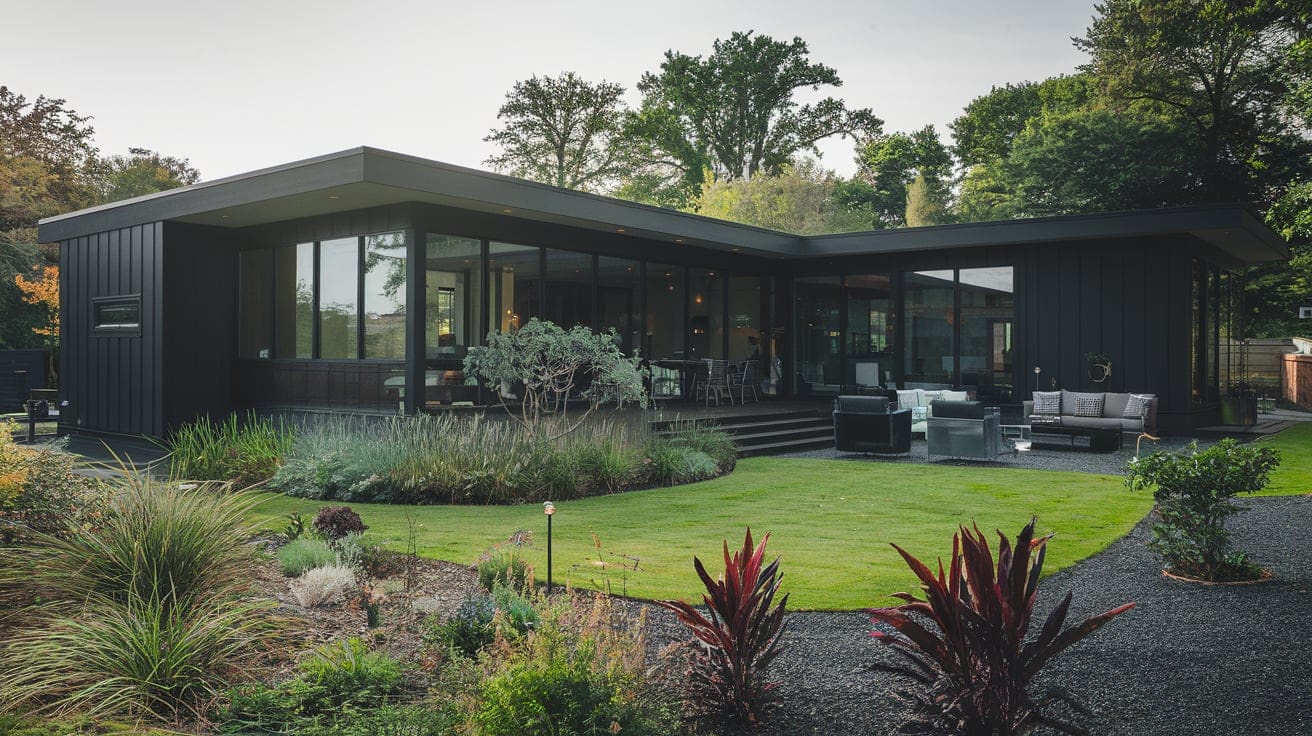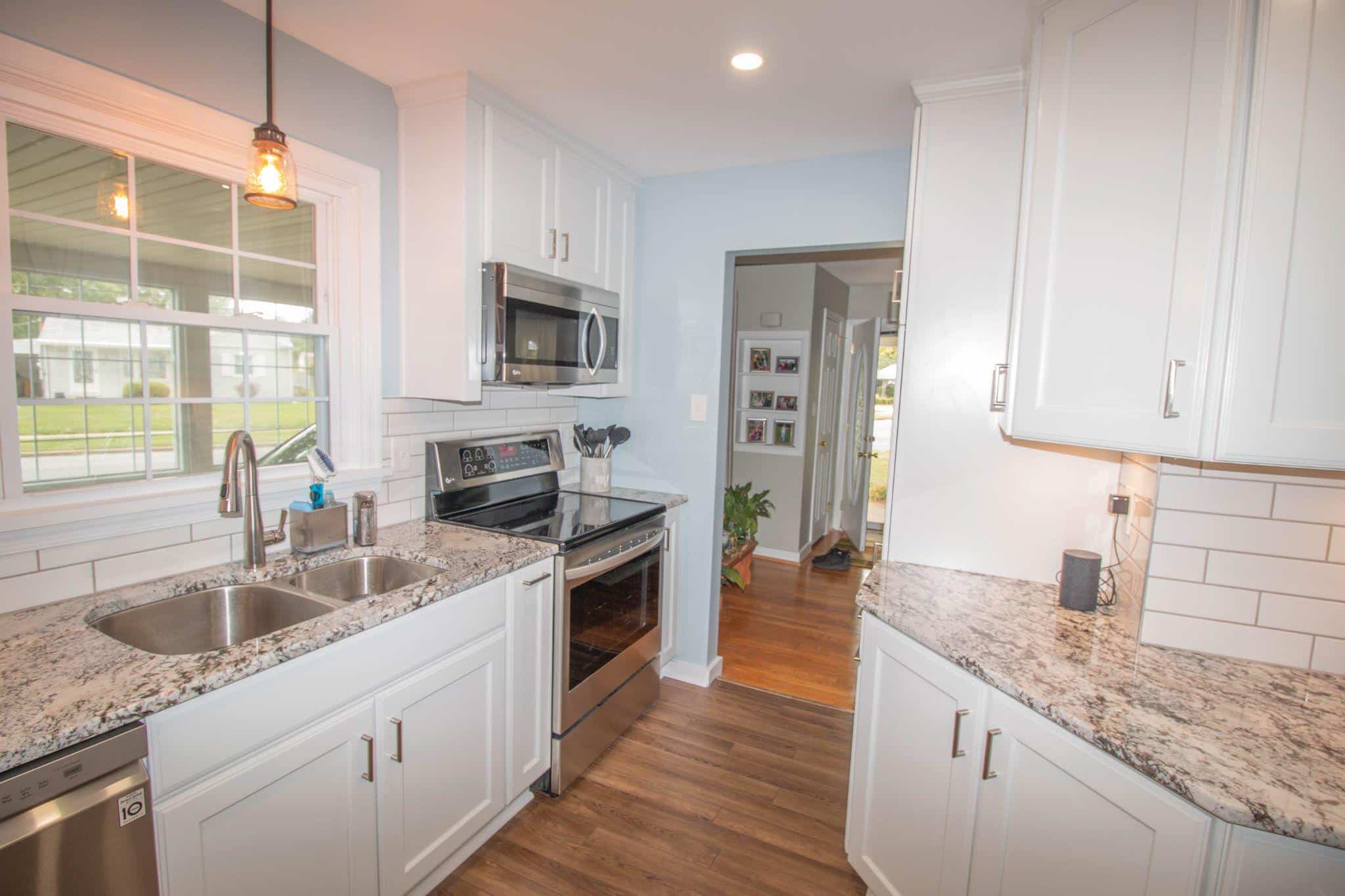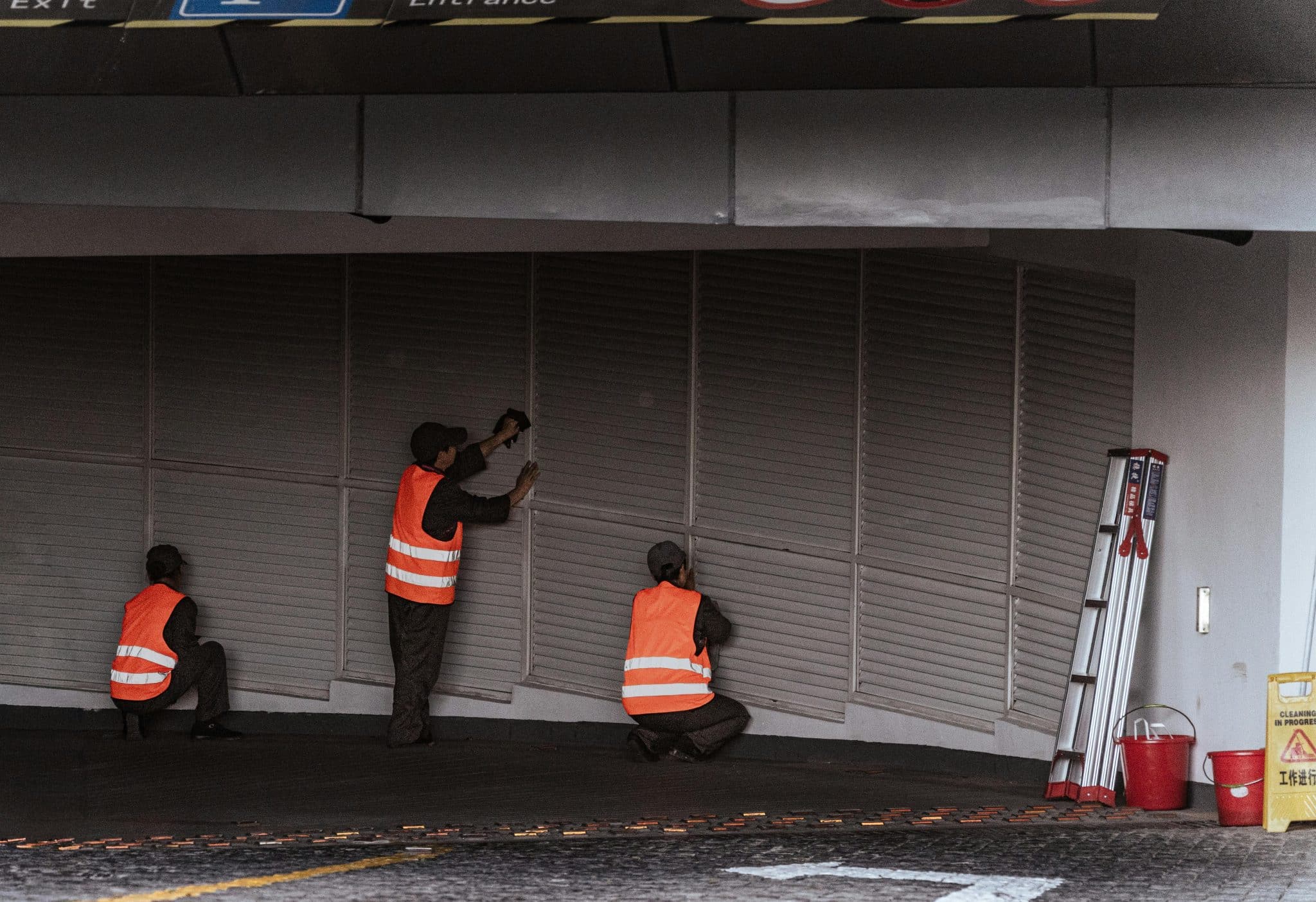Black, navy, or charcoal – these bold exterior colors can turn an ordinary house into a standout property on your street.
However, choosing the right dark shade for your home can feel overwhelming.
Many homeowners hesitate to paint their houses dark, worried about resale value or maintenance.
Yet dark-colored homes are becoming increasingly popular, especially in modern residential areas.
A well-chosen dark exterior can increase your home’s curb appeal, create striking contrasts with natural surroundings, and make architectural details pop. Plus, dark colors can help your home appear more high-end and distinctive.
Read on to explore carefully selected dark house colors that will help you make the perfect choice for your modern home’s exterior.
Benefits of Dark Exterior Colors
1. Makes a Strong Visual Statement
Dark exterior colors stand out in residential areas. Unlike traditional light-colored homes, dark shades create a distinct look that separates your property from neighboring houses.
2. Highlights Architectural Features
The natural contrast between dark walls and light trim emphasizes your home’s design elements. Windows, doorways, and other structural details become more prominent against a dark background, adding visual interest to your exterior.
3. Reduces Visible Maintenance Issues
Dark colors excel at concealing common exterior challenges. Dust, minor surface inconsistencies, and daily wear that would show clearly on light-colored homes become less noticeable with darker shades. This means less frequent cleaning to maintain a polished look.
4. Offers Design Flexibility
Dark exteriors serve as an ideal base for various design combinations. You can blend them with natural wood elements, stone features, metal fixtures, white trim, and numerous accent colors.
The versatility of dark shades lets you create a cohesive look while incorporating different materials and complementary colors into your home’s exterior design.
21 Stunning Dark House Colors for Modern Homes
1. Tricorn Black
This pure, true black stands as a modern classic among exterior colors. Its clean, sharp appearance transforms contemporary homes into statement pieces in the neighborhood.
It maintains its depth when sunlight hits this shade without fading into gray tones. Homeowners who choose this color often pair it with bright white trim to create striking visual contrasts.
This shade works particularly well on homes with large windows and metal fixtures, emphasizing their clean lines and structural elements.
For maximum impact, consider using this color on homes with varied textures or architectural details that benefit from strong shadows.
2. Onyx
This deeply saturated black carries subtle warm undertones that soften its impact while maintaining its bold presence.
It shifts and changes throughout the day, revealing complex undertones that add visual interest to your home’s exterior.
The warmth in this shade makes it particularly effective on homes with natural elements like wood or stone features.
When paired with cream or off-white trim, it creates a softer contrast than pure black while still maintaining visual impact.
Many homeowners appreciate how this shade can make modern homes feel more inviting while preserving their contemporary character.
3. Stormy Blue
This captivating blue-gray shade brings a sense of calm while maintaining a strong presence on home exteriors.
In morning light, the blue undertones emerge more prominently, creating a welcoming feel, while afternoon sun emphasizes its deeper gray aspects.
The color proves particularly effective in coastal settings or homes with water features, as it complements natural elements beautifully.
When paired with white trim or natural wood accents, it creates balanced contrasts that highlight architectural details.
Many homeowners select this shade when they want their exterior to feel both bold and soothing, offering year-round visual interest without overwhelming the neighborhood.
4. Black Evergreen
This rich color combines the strength of black with subtle green undertones, creating a sophisticated shade that connects with natural surroundings.
In direct sunlight, the green notes become more visible, while shadowed areas appear nearly black, adding depth and dimension to your home’s exterior.
The shade works exceptionally well in wooded settings, where it picks up colors from surrounding vegetation.
When combined with light stone elements or white trim, it creates striking contrasts while maintaining a connection to the landscape.
This color proves particularly effective on homes with significant outdoor living spaces, as it bridges built and natural environments.
5. Black Spruce
This nature-inspired dark color shifts between deep black and forest green depending on light conditions and viewing angles. In morning light, the green undertones emerge subtly, while evening shadows bring out its darker aspects.
The shade creates a strong presence without overwhelming neighboring properties. It pairs exceptionally well with natural stone foundations and wood accents, creating a cohesive exterior design.
Homeowners often select this color to achieve a bold look while maintaining ties to natural elements. The color remains consistent through seasonal changes, providing year-round visual appeal.
6. Iron Ore
This deep charcoal shade offers the perfect balance between black and gray, creating a strong statement that works in various settings.
The color shows subtle variations throughout the day, adding visual interest without being overpowering. In bright sunlight, it reveals warm undertones that soften its appearance, while maintaining depth in shaded areas.
This versatility makes it an excellent choice for homes with complex architecture or mixed materials. Many homeowners choose this shade when they want a dark exterior that feels less severe than pure black.
7. Wrought Iron
This nuanced dark gray carries warm undertones that add remarkable depth to exterior surfaces. In morning light, it appears softer and more welcoming, while afternoon sun brings out its deeper characteristics.
The shade works particularly well on homes with prominent architectural features, as it creates subtle shadows that highlight design details. When paired with white or cream trim, it produces clean lines without harsh contrasts.
Many homeowners select this color for its ability to complement both traditional and modern design elements while providing a strong visual foundation.
8. Hague Blue
This deep navy shade brings sophistication to home exteriors, appearing almost black in certain lights while revealing its true blue depth in others.
Morning and evening light particularly showcase its rich undertones, creating visual interest throughout the day. The color works exceptionally well in coastal areas or urban settings, providing a strong presence without feeling harsh.
When used with brass or copper fixtures, it creates a timeless, upscale appearance. The shade also pairs beautifully with natural stone elements and white trim, offering numerous design possibilities.
9. Cracked Pepper
This bold charcoal color features warm undertones that create an inviting presence despite its dark nature. Throughout the day, it shifts between deeper and lighter tones, adding visual interest to exterior walls.
The shade proves particularly effective on homes with mixed materials, as it complements both stone and wood elements naturally.
Many homeowners appreciate how this color bridges modern and traditional design styles, making it versatile for various architectural approaches.
The warmth in this shade helps maintain a welcoming feel while providing strong visual impact.
10. Night Watch
This black-green blend captures the depth of forest shadows while maintaining modern appeal. The color shows its green undertones most prominently in natural daylight, while evening hours bring out its darker qualities.
On cloudy days, it appears more neutral, providing versatility across weather conditions.
The shade works particularly well with homes featuring natural stone accents or wooden elements, creating a harmonious connection between built and natural environments.
Many homeowners choose this color to create a distinctive look that still feels grounded in nature.
11. Shade Grown
This sophisticated brown-black creates a unique exterior presence with its complex undertones. In direct sunlight, the brown notes emerge subtly, adding warmth to the overall appearance.
The color maintains its depth in shadowed areas while avoiding the starkness of pure black. It pairs exceptionally well with both light and dark trim options, offering flexibility in design choices.
On homes with mixed materials, this shade serves as an excellent unifying element, bringing together various exterior components into a cohesive whole.
12. Salamander
This strong black carries subtle green undertones that shift throughout the day, creating visual interest without compromising its modern appeal.
Morning light brings out its softer aspects, while midday sun emphasizes its darker qualities. The shade works exceptionally well on contemporary home designs with clean lines and minimal ornamentation.
When paired with metal accents or large windows, it creates striking contrasts that highlight architectural features. The color maintains its richness across seasons, providing year-round curb appeal.
13. Deep Plum
This sophisticated dark purple creates an uncommon yet appealing choice for modern home exteriors.
In bright daylight, the color reveals subtle red undertones that add warmth to its appearance, while late afternoon light brings out its deeper violet qualities.
The shade stands out particularly well in areas with green landscaping, as it creates a striking natural contrast.
When combined with gray stone elements or cream-colored trim, it produces a balanced, refined look that draws attention without being overwhelming.
Many homeowners choose this color to achieve a distinctive exterior that sets their property apart while maintaining a sense of understated refinement.
14. Studio Green
This intense dark green reads as a near-black in many lighting conditions, creating depth through its subtle color variations.
Morning and evening light reveal its green undertones most clearly, while midday sun showcases its darker qualities.
The shade proves especially effective on homes with substantial architectural details, as it creates interesting shadow play across surfaces.
When combined with light-colored trim and natural materials, it produces a balanced, sophisticated exterior that stands out without overpowering.
15. Dark Engine
This rich gray carries blue undertones that create visual movement across exterior surfaces throughout the day. In morning light, the color appears softer and more nuanced, while afternoon sun brings out its deeper characteristics.
The shade adapts well to various home styles, from sleek modern designs to updated traditional architecture.
Many homeowners appreciate how this color creates strong curb appeal while maintaining a subtle, refined presence. It pairs particularly well with both light and dark accent materials.
16. Urbane Bronze
This deep earth-toned gray creates warmth while maintaining a strong presence on home exteriors. Morning sunlight reveals its brown undertones, while afternoon light emphasizes its darker qualities.
The shade demonstrates remarkable versatility, working equally well in sunny locations and shaded areas. On homes with mixed materials, it serves as an excellent base color that unifies different elements.
Many homeowners select this color for its ability to bridge traditional and modern design approaches. The warmth in this shade helps create an inviting atmosphere while providing substantial visual impact.
17. Black Beauty
This pure, deep black creates clean definition and sharp outlines on exterior surfaces. Throughout the day, it maintains its true color without shifting to warmer or cooler tones.
The shade shows its best qualities on homes with strong architectural elements, as it emphasizes structural lines and creates pronounced shadows.
When paired with bright white trim or large windows, it produces dramatic contrasts that highlight design features. Many homeowners choose this color to achieve a clear, defined look that stands out in the neighborhood.
18. Carbon
This rich dark gray offers sophistication while avoiding the intensity of pure black shades. In direct sunlight, it reveals subtle variations that add interest to exterior walls.
The color proves particularly effective on homes with textural elements, as it enhances surface details through shadow play. When used with light-colored accents, it creates clean contrasts without appearing harsh.
Many homeowners appreciate how this shade maintains its appeal across different weather conditions and seasons.
19. Charcoal Smudge
This soft-textured black creates visual interest through its subtle variations and weathered appearance. Throughout the day, it shifts between lighter and darker tones, adding depth to exterior surfaces.
The shade works exceptionally well on both contemporary and classic home styles, making it a versatile choice for various architectural approaches.
When combined with natural materials like wood or stone, it creates a balanced, harmonious look. Many homeowners select this color for its ability to provide strong visual impact while maintaining a lived-in, established feel.
20. Black Magic
This deep, true black creates clear architectural definition while maintaining subtle depth in its finish. Morning light reveals its pure character, while afternoon sun emphasizes its strong presence.
The shade performs particularly well on modern homes with clean lines and minimal ornamentation. When used with contrasting materials or light trim, it produces sharp, defined edges that highlight structural elements.
Many homeowners choose this color to achieve a bold, contemporary look that maintains its impact throughout the seasons.
21. Night View
This complex dark color shifts between black and navy tones as natural light changes throughout the day. Its blue undertones become more apparent in direct sunlight, while shadowed areas display deeper, richer tones.
The shade works particularly well on homes with varied architectural details, as it creates interesting shadow patterns across surfaces.
When paired with metallic accents or light-colored trim, it produces a sophisticated exterior that catches attention without appearing overwhelming. Many homeowners select this color for its depth and versatility.
How to Choose the Right Dark Exterior Color
1. Consider Your Home’s Style and Setting
Your home’s architectural design influences how dark colors appear on its surfaces. Pay attention to your property’s surroundings – including trees, neighboring houses, and natural light exposure.
A home in a heavily shaded area might need a slightly lighter shade to maintain visibility, while a house in full sun can handle deeper tones effectively.
2. Test Colors in Natural Light
Dark colors change significantly under different lighting conditions. What looks like a pure black in the store might show blue or brown undertones in sunlight.
Test your chosen colors at different times of day – morning, noon, and late afternoon. This helps you understand how the color will look on your home throughout the day.
3. Create Effective Color Combinations
The impact of dark exterior colors largely depends on their supporting shades. Light trim creates strong definition, while similar dark tones offer a more subtle look.
Consider fixed elements like roofing, stonework, and pathways when selecting complementary colors. Make sure your chosen combination works with these permanent features.
4. Sample Before Full Application
Apply large test patches (at least 4 feet square) on different sides of your house. Watch these samples for several days to see how they react to changing light and weather conditions.
This step helps prevent costly adjustments after full application and ensures you’ll be satisfied with your choice long-term.
Conclusion
Selecting a dark color for your home’s exterior marks a significant design decision.
Through our exploration of 21 distinctive dark shades, from pure blacks to complex green blacks and deep charcoals, we’ve seen how each color brings its character to modern homes.
The right dark shade does more than change your home’s look – it highlights architectural features, reduces maintenance concerns, and creates a lasting visual impact in your neighborhood.
As you consider these options, remember that natural light, surrounding elements, and your home’s style all play key roles in how a dark color will appear on your walls.
Take time with your selection process, thoroughly test your chosen shade, and consider how it fits your entire exterior design scheme. Your careful choice will result in an exterior you’ll value for years ahead.





























